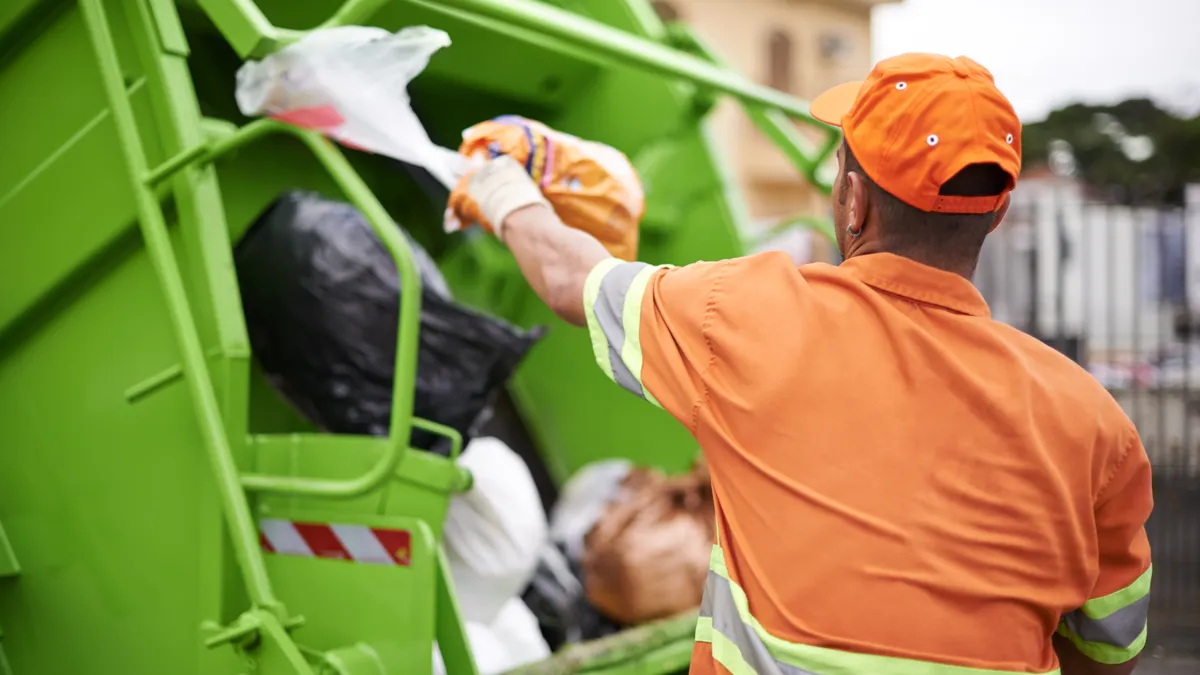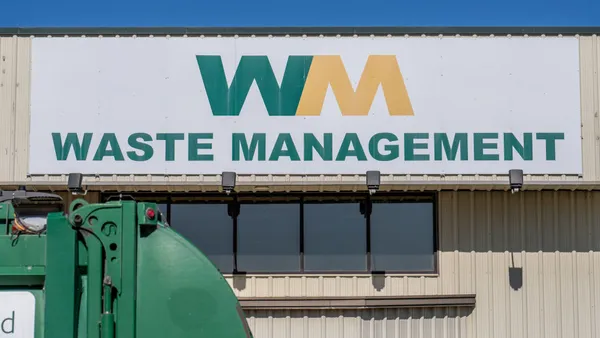Incidents of work-related injuries in the waste and recycling industry increased in 2022, while solid waste collection workers reported fewer illnesses, according to annual data released by the U.S. Bureau of Labor Statistics on Wednesday.
For solid waste collection workers, the injury rate was 4.7 total cases per 100 full-time equivalent (FTE) workers, up from the previous year’s 4.0. Landfill worker injury rates increased in 2022, too. The rate was 3.6 cases per 100 FTE, up from the previous year’s 2.2. Rates for MRF workers rose to 4.4, up from 3.2 the previous year.
The total recordable illness rate for solid waste collection workers was 5.8 per 100 FTE, down from 8.4 in 2021. In 2022, landfill workers’ illness rate was 8.6. BLS did not provide illness data for landfill workers in 2021, and did not provide MRF worker illness data for 2021 or 2022.
Waste and recycling industry professionals say the increase in injury incidents is concerning, especially after workers in 2021 experienced the lowest rates of injuries and illnesses since at least 2006.
The Solid Waste Association of North America did not respond to a request for comment as of press time, and the National Waste & Recycling Association said it was working on its response to the latest data.
David Biderman, president of Biderman Consulting, said the data “will require further investigation,” adding that he has heard from the companies and local governments he works with that there has been an uptick in injuries and collisions.
Though it’s not clear what caused the increased incident rates for 2022, Biderman said it’s possible that there was “slightly more attention paid to health and safety in 2021 due to the COVID-19 pandemic than in 2022, when the pandemic was mostly in the rearview mirror.”
Both WM and Republic Services have publicly set goals to achieve a total recordable incident rate of 2.0 or lower by 2030. WM reported a rate of 3.02 in 2022, about the same as its 3.0 rate in 2021. Republic Services reported a rate of 2.9 in 2022, down from 3.6 in 2021. Waste Connections does not have a set goal, but reported a TRIR of 3.3 in both 2021 and 2022.
In 2022, private industry employers across all job sectors reported 2.8 million nonfatal workplace injuries and illnesses overall, up 7.5% from 2021. The incidence rate for all private industry jobs reported was 2.7, the same as the previous year.
BLS plans to release 2022 worker fatality statistics on Dec. 19. In 2021, refuse and recyclable materials collection was the seventh-deadliest occupation in the United States, down from sixth in 2020.
The latest BLS injury and illness statistics “show the urgent need for worker-centered safety reforms,” especially since the data only reflects injuries and illnesses that are officially reported, meaning higher numbers of incidents are likely occurring in U.S. workplaces, the National Council for Occupational Safety and Health, a federation of grassroots worker groups, said in a statement.
“Workers more than anyone understand their jobs and worker-centered solutions lead to the most effective safety reforms that can prevent injuries and illnesses before they happen,” said Jessica Martinez, National COSH’s co-executive director.
COSH recommends removing workplace hazards by prioritizing “system-wide engineering and operational changes.” Safety policies that focus on individual actions, such as wearing personal protective equipment, should be secondary because “this still exposes the worker to hazards and can provide a false sense of security.”
COSH also advocates for gathering safety input directly from workers, documenting health and safety problems as they come up, and conducting trainings in languages employees understand.











